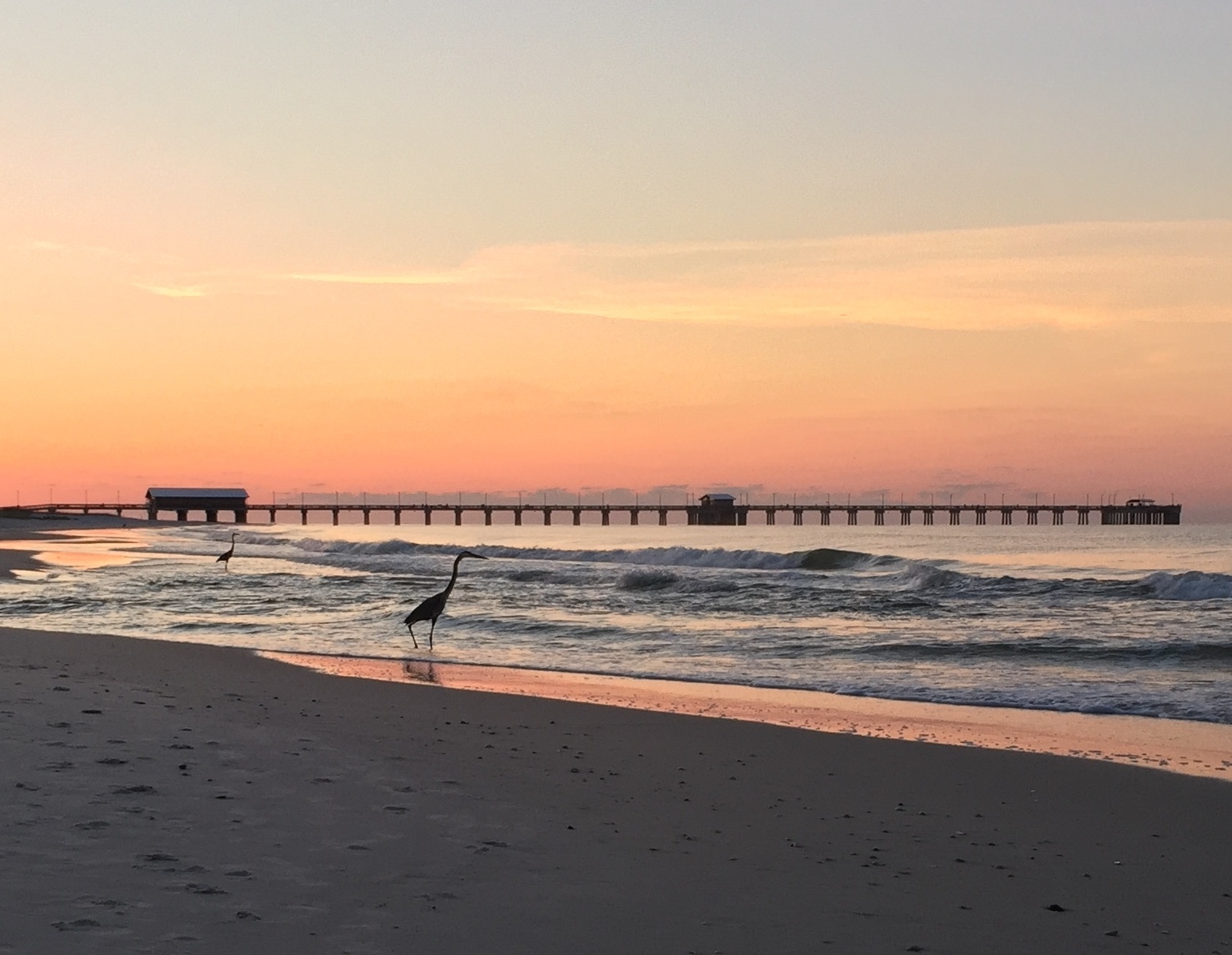If you have visited our Alabama Gulf Coast, you have most likely seen a great blue heron, a wading bird that stands as tall as four feet and has a wingspan of nearly six feet. They are loners, so it’s not unusual to see a solitary, thin silhouette of one close to the shoreline at sunrise or sunset.
No doubt about it: Herons are built to catch fish. Those stately, majestic, great blue herons stand perfectly still while stalking their prey. Then the small fish or crabs in shallow water are no match for the quick-moving heron and its sharp bill. It’s fun to watch.
They are so fast and bold they sometimes swipe fish from bait buckets – which, of course, can upset a fisherman. For those who fish trout streams, they can be a nuisance because they take all the fish they can catch in the shallow water. Just remember great blue herons are not endangered, but they are protected as a non-game bird.
For the most part, though, herons are a sign to anglers that fish are abundant in the area. When you see large numbers of these birds – as we have here – it’s an indication of a healthy ecosystem. And that’s a good thing for all of us, including those who like to cast a line in the water.
Because they stick mostly to the shore and shallow water, they do not interfere with pier fishermen or fishing charters. Just watch out for your bait bucket.



Leave A Comment